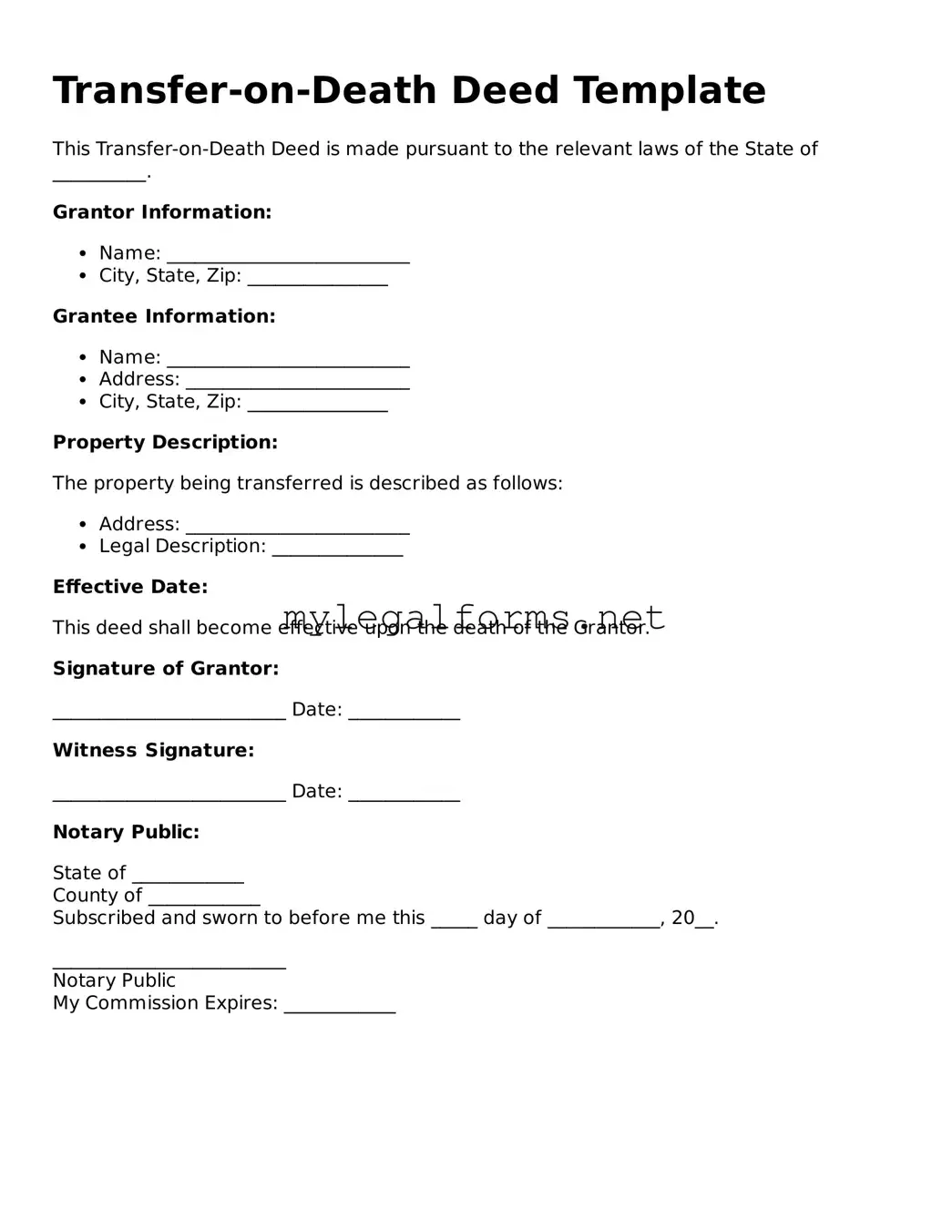Filling out a Transfer-on-Death (TOD) Deed form can seem straightforward, but many people make common mistakes that can lead to complications down the road. One frequent error is not including all required information. The form typically asks for specific details about the property and the beneficiaries. Omitting even a small piece of information can render the deed invalid.
Another mistake is failing to sign the form properly. A TOD Deed must be signed by the property owner, and in some states, it may also need to be notarized. If the signature is missing or not executed correctly, the deed may not be recognized. Always check the requirements in your state to ensure compliance.
People often neglect to consider their beneficiaries carefully. Choosing someone who may not be able to manage the property or who is not in a good relationship with the owner can lead to disputes. It’s essential to think through these decisions and possibly discuss them with family members or legal advisors.
Additionally, some individuals mistakenly believe that a TOD Deed overrides existing wills or trusts. This is not necessarily true. If there are conflicting documents, the situation can become complicated. It is advisable to review all estate planning documents to ensure they align with the intentions expressed in the TOD Deed.
Another common error is not recording the deed with the appropriate local government office. A TOD Deed must be filed to be effective. Failing to do so can mean that the property does not transfer as intended upon the owner's death.
People sometimes forget to update the deed after significant life changes, such as marriage, divorce, or the death of a beneficiary. These changes can affect who inherits the property. Regularly reviewing and updating the deed is crucial to ensure it reflects the current wishes of the property owner.
Moreover, some individuals do not understand the tax implications of a TOD Deed. While the transfer itself may not incur taxes, the value of the property may impact the estate tax. Consulting a tax professional can help clarify any potential issues.
Finally, many overlook the importance of discussing the deed with beneficiaries. Not informing them of their status can lead to confusion and resentment later. Open communication about estate planning decisions can help prevent misunderstandings and foster harmony among family members.
